From Driver to Rider: My Experience with the Pros and Cons of public transit for my daily commute.
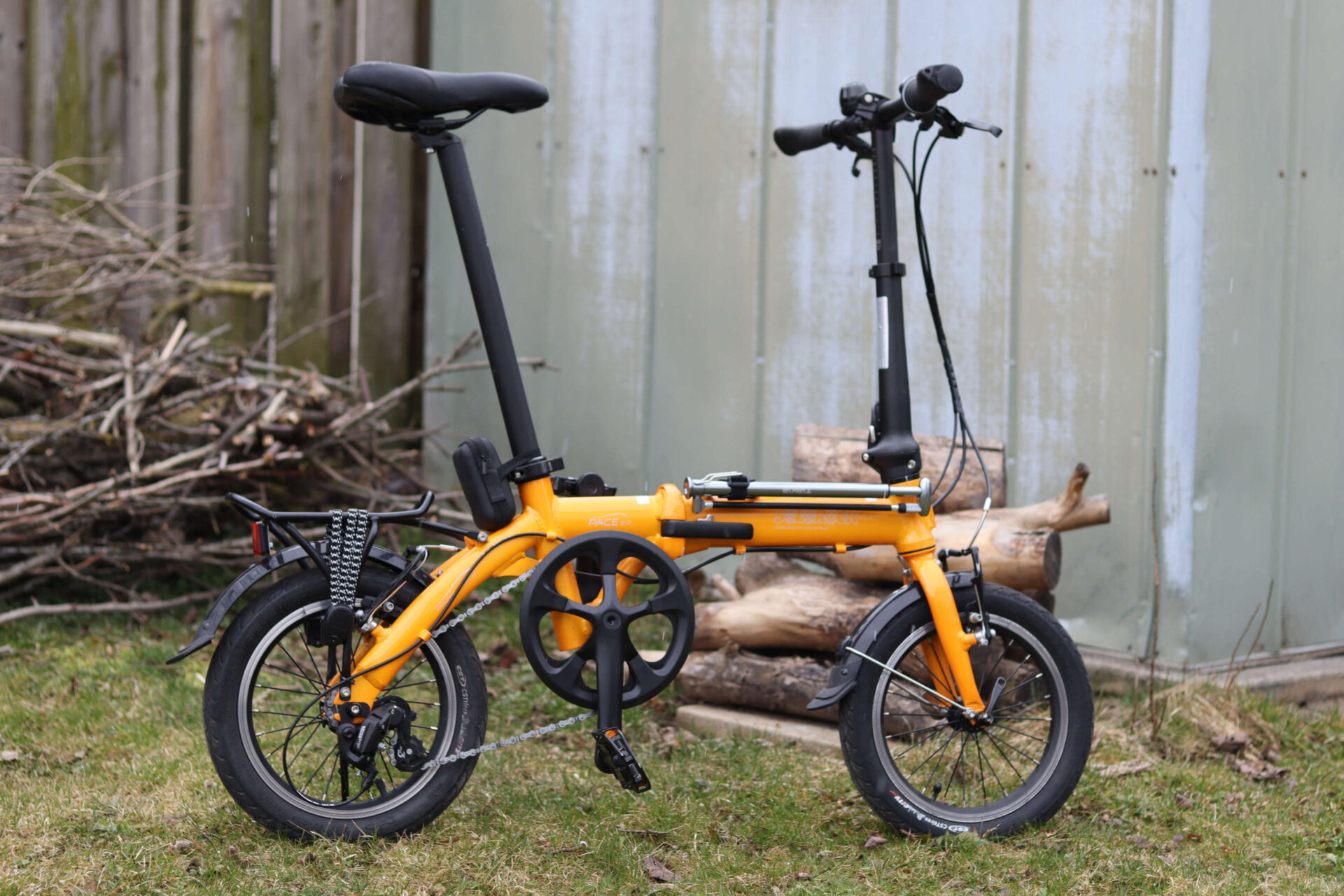
I’m a car commuter and I hate it. Working out of town means that – when I’m in office – I spend upwards of two and a quarter hours per day on the road, while also paying quite a bit in fuel for the privilege to do so. Though I do my best to use this time by listening to podcasts or making phone calls (on the hands free), I long to do more with the time, while also not having the stress of focusing on the road.
In early April of 2023 Metrolinx added the #17 bus route. This bus goes from Waterloo to Hamilton, and stops in Guelph and Aldershot along the way. This got my attention for a few reasons, firstly it provides a means of getting from Guelph to Waterloo, and Guelph to Hamilton by bus, with frequency that is regular enough to actually align with when you may want to go. Secondly, it represented one of the first non-Toronto centric regional routes I’ve seen.

(Image from Metrolinx: https://assets.metrolinx.com/image/upload/v1692813432/Documents/GO/full-schedules/FS02092023/TABLE17.pdf)
I work in Oakville, near the Bronte GO Station and my commute by car is usually around 1hr to 1hr 15min or so each way. Though I am thankful that my job allows me to work remotely 1-2 days a week. My commute still represents 6-10hrs a week that is effectively wasted. Adding up those hours over weeks, months, and years presents a scary amount of time lost.
Between work, volunteering, chores, errands, and (sweet little) recreation my schedule is very tight. This is of course of my own doing, however I still endeavor to save time whenever I can to help me keep up with everything else I care about. So commute time that could be replaced with time to catch up on emails, read, or other light work was an excellent proposition.
With the addition of the #17 GO bus, for the first time there was a potentially viable way for me to commute using transit instead of driving. From Guelph Central Station I could take the #17 to Aldershot and then take the Lakeshore West train from Aldershot to Bronte GO. The trip from Guelph Central to Bronte was only slightly longer than my current drive at around 1hr 25min. I would happily exchange 10-20 minutes for the ability to be able to use the majority of the 1hr 25min trip how I like, instead of fixated on the road.
Challenges
The first problem I encountered was getting to Guelph Central Station. I didn’t want to drive downtown for a couple reasons, paying for parking was one of them. I looked at taking the Guelph Transit #9 bus to get downtown. The route would pick me up close to home, and is relatively direct to Guelph Central. So initially looked like a good option. That was until I looked at the schedules:
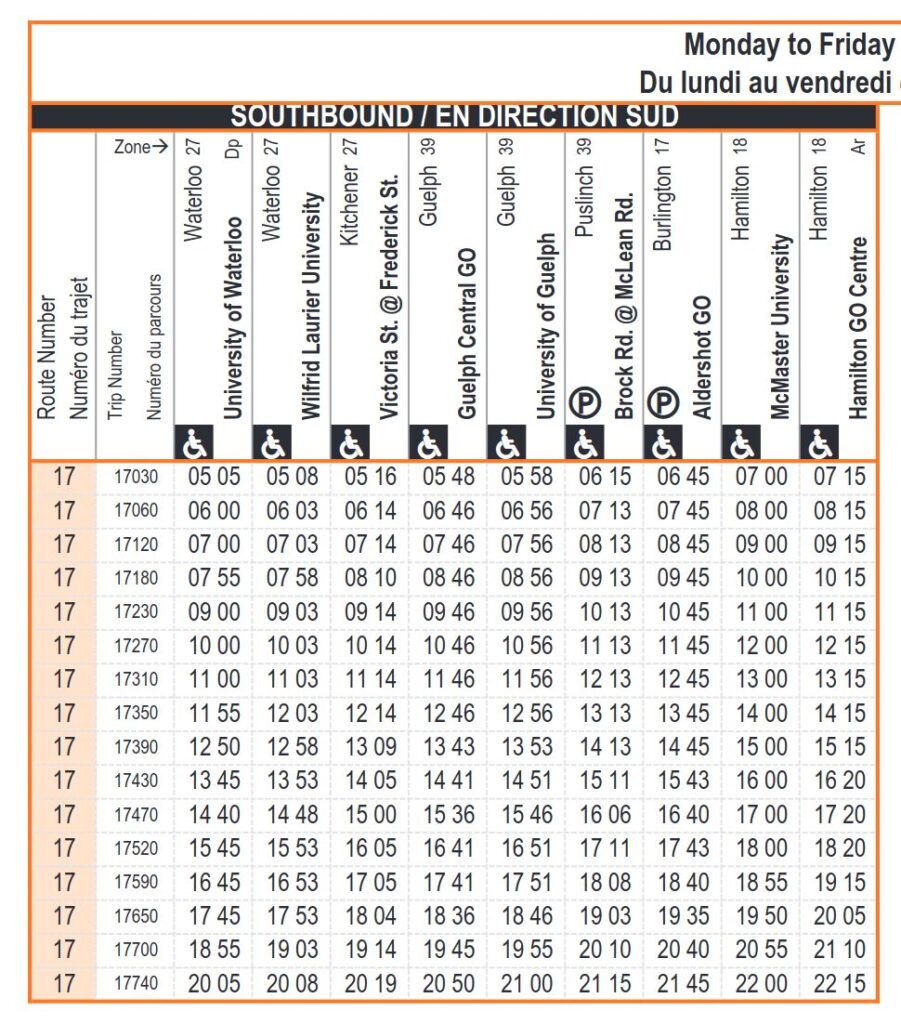
(Image from Metrolinx: https://assets.metrolinx.com/image/upload/v1692813432/Documents/GO/full-schedules/FS02092023/TABLE17.pdf)

(Image from Guelph Transit: https://docs.google.com/spreadsheets/d/154b-0SUd8JniEn–aEN1TGKVDTTut7MnbHjTYAKkSlc/edit#gid=1649603607)
To be at work on time I needed to catch the 5:48AM #17 GO bus. The earliest Guelph Transit’s #9 would get me downtown is 6:07AM however – so no luck there. Still not wanting to drive downtown I considered going to the Aberfoyle GO Park and Ride, and hopping on the #17 there. It’s an unattractive proposition, at the point that I drive for 20min (nearly 1/3 of the total car commute), it’s hard to justify a transfer instead of simply driving the rest of the way.
However, even if I were to drive to the Aberfoyle park and Ride, there was second issue. Getting from Bronte GO station to work.
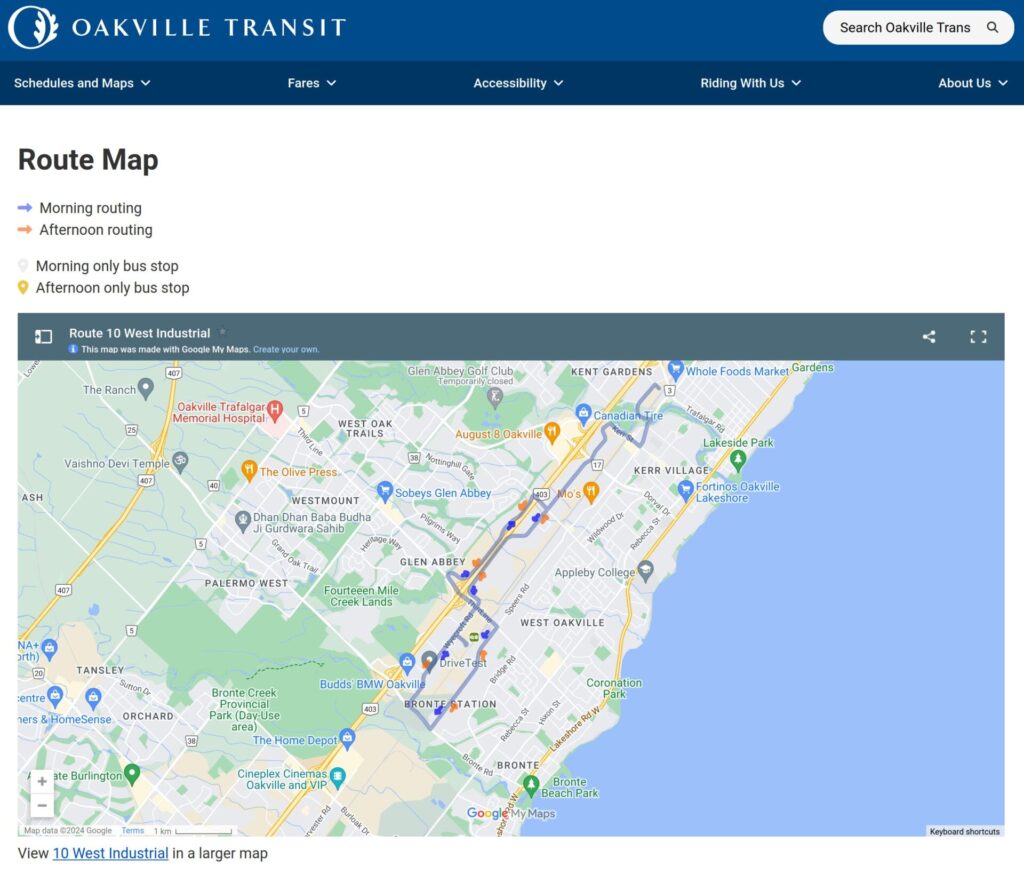
(Image from Oakville Transit: https://www.oakvilletransit.ca/schedules-maps/10-west-industrial/)
Oakville Transit does have a bus that goes from Bronte along the service roads. The #10 West Industrial which has opposing Morning and Afternoon Routing. The time of day routing presented a huge challenge because I work on the south side, meaning that this trip alone would take nearly 35 minutes. That made using Oakville transit a non-starter because the walk would end up being quicker.
My solution to the last mile on both ends was some new hardware. I started looking at getting a folding bike.
There are many different mechanisms, styles, sizes, materials, gears, and more for folding bikes (as there are with all bikes). I spent countless hours combing over websites, forums, and Reddit for reviews and opinions. I did notice a lack of information and comparisons of these styles and types, especially around reviews on how folding bikes worked with different types of transit (e.g. where can/do you put it).
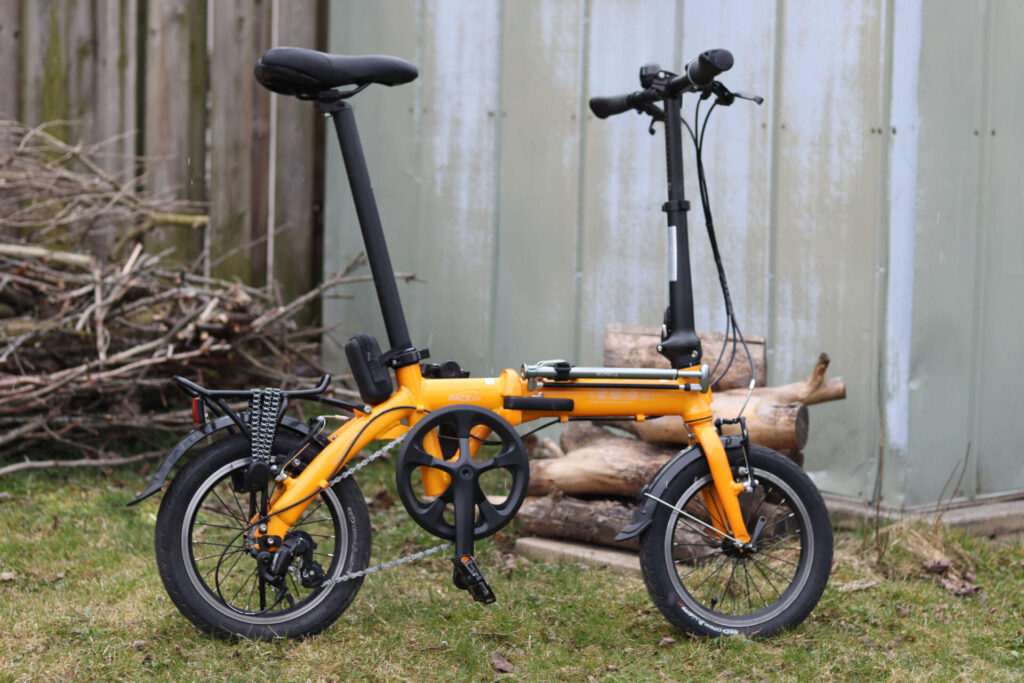
After a couple test rides, I ended up going with the most compact one I could find, with 14″ wheels and only three gears. I was very concerned about the size of the bike for taking it on the bus. That ended up not being as big of a problem as I thought it would be, as I usually end up putting the bike in the luggage compartment under the bus. Having slightly larger wheels (either 16″ or perhaps 20″) and some more speeds to choose from would likely make the bike part of the trip more pleasant.
Taking the First Trip
Prior to this first bus trip, it had been many many years since I was last on a GO bus (and the only reason I was on that time was due to missing the GO train). Not having really ever used the GO bus before it left me feeling very uncertain, and that translated to hesitancy about my first trip. Am I sure I read and figured out the routes right? Am I sure that I can connect to the train without issue? Did I leave enough time to bike downtown and make the bus? Am I sure I understand the transfer process right? etc…
The unknown was my biggest hurdle, above anything else, a lack of familiarity with the steps and process, and not being sure if I had lined up everything correctly. The thought of being late to work because I goofed something up (or worse, stranded somewhere) was not pleasant.
Of course, this isn’t a transit specific complaint, and I certainly have had similar thoughts about road trips, especially as a new driver (I did start driving just before data plans and GPS become ubiquitous, so it wasn’t something I had on hand early on). For long drives I rely on the GPS to handle the majority of these questions, insofar as I don’t have to worry about closed roads or detours, because internet connected GPS just updates.
However, the navigation software I used was not very good for determining transit trips (especially mixed bike/transit). Part of this may be that my go to GPS apps are car-centric and there may be better ones out there to handle these kinds of trips that I’m just not privy to yet.
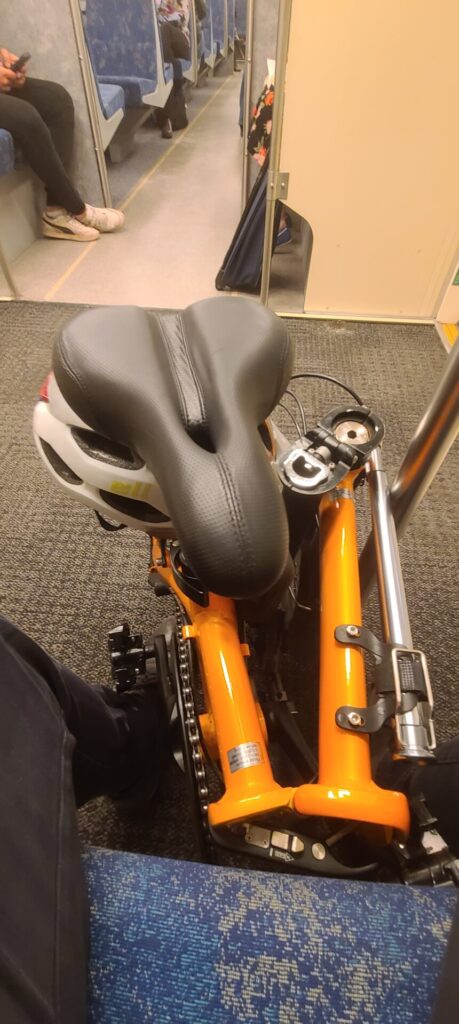
The nice part about picking the smallest bike I could find, at ~22lbs. It’s not much of a challenge to carry about the bus, station, or train, and I don’t feel like I’m taking up too much space on the train.
I do always ask the bus drivers where they’d prefer me put the bike, which is a little cumbersome. I do so because I often get different answers, some say bring it on, other times they say to put it in the luggage compartment. I much preferred the train where I was just able to walk right on and sit down.
Despite the initial uncertainty, once I had taken a few trips without issue, like any other travel it started to become routine.
My Thoughts
The amount of mental effort required to initially figure out this trip was much more than it should’ve been. Once I had it all figured out it wasn’t too bad, but assessing which transit options were needed, lining up schedules, and looking at all the options was rather time consuming.
I had initially thought Google Maps would’ve been able to handle the trip and routing, although it does produce transit routes that are in theory workable, the efficiency of the routes often ranges from poor to something no sane person would ever consider (for intercity trips that is).
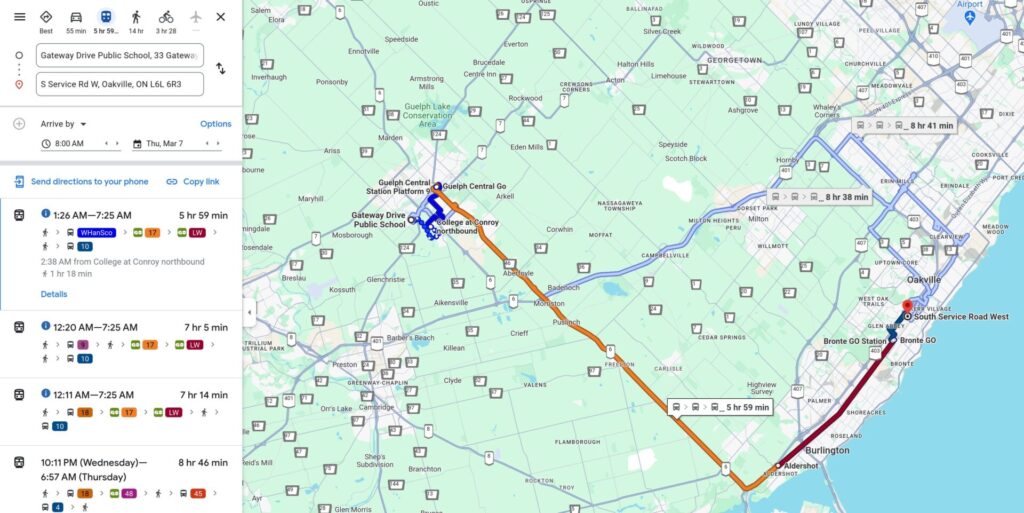
(Image from Google Maps)
Routes ranging from 6 to over 8 hours are embarrassing. Especially when, if local transit is avoided on either end (in favour of simply walking) many hours would be saved.
The transit trip also made for very long days. I would leave the house at 5:20AM, and wouldn’t be back home until around 6:50PM, a full 13h 30min. This was the toughest part for me, though I had more time to work and read, plus some much needed activity in my day, it is just too long.
Now, I am happy to have the option of choosing transit and continue to do so occasionally. How frequently I am able to use transit depends on a few factors though. A tight schedule, or need to make some stops often rules out transit.
I also have challenges with the cold weather, but for a counterintuitive reason – I get too warm. Wearing winter gear that’s not super breathable, plus work attire that’s also not very breathable, can lead to a sweaty morning and a rather uncomfortable day. Warmer weather means fewer, more breathable layers. So long as I’m not rushing (putting in equivalent effort to that of a brisk walk), I don’t find I get sweaty.
Reflecting on Past Transit Experiences
When I was a student living in the south end of town living off of Edinburgh near Kortright, I regularly took the bus to campus. The routes I used were the 1A and 1B (now the 1 and 2). The experience of using transit then was completely different. I could count the number of times I had to look at the schedule on one hand. The busses came frequently enough it wasn’t a concern when the next one was, I simply walked to the Edinburgh bus station, and aimed to get on the southbound one (as it was slightly faster), if the northbound bus came first it was easy to run across the street when I saw it coming. It didn’t matter if my class was at 8am, 10:30am, or 2pm, I walked to the end of the street and a bus was there in minutes.
This is the transit experience that is needed to make it more attractive than driving. In university, it was foolish for me to drive rather than take the bus, as the bus was: cheaper, faster, and easier. These are the things that ideally need to be met to make transit more attractive.
To give credit, it is no doubt it is easier to provide adequate transit when there are many users, concentrated near enough to one another, many all going to one (or a few) destinations.
Where I Hope We Can Go
Perhaps the most frustrating thing, it feels like we are so close to having transit be a viable option for these kinds of commutes. I am personally okay trading some time for the ability to use the time on my commute as I please. Though of course not everyone feels the same, I’m sure there are many others who would be happy to make this trade.
Commuters who are coming from and going to the same destinations five or so days a week are an excellent market to capitalize on. Of course, to leverage these commuters, they need a way to get to and from the central location where the regional transit picks up and drops off. This presents a bit of a chicken and egg problem. Regional transit can’t get the customer base to it without local transit/mobility.
Around, the GTA Metrolinx has solved this by being the largest free parking provider in North America, something I’m not sure they should be so proud of. Surface lots represent much wasted land, and parking garages come with eye-watering amount of “investment” required.
We can’t continue down this pathway. Not just because it is an impressive exercise in squandering public funds (I’m pretty confident that the parking structure not charging for use has a negative ROI). But because it denies a great deal of opportunity. If you live in one (non-Toronto) Greater Golden Horseshoe city, and want to commute to another (non-Toronto) city by transit, you are most likely out of luck.
For more adoption a few things need to be addressed: cost, speed, and ease.
Cost
The combined fare of the GO Bus, and Train was quite cost effective for me. But still amounted to (very slightly) more than my fuel costs for driving. Of course, it is faulty to compare just the costs of fuel to the cost of transit. However this is the comparison that many people do make as most other costs of driving are perceived as fixed costs. Maintenance, and depreciation are not (completely) fixed costs, but most vehicle owners do see it that way.
The other side is the costs of the infrastructure, which are (nearly) completely divorced from the costs of driving. For some perspective, Guelph receives a share of the $0.02/L set aside for municipalities from the gas tax. In 2022-2023 this amounted to $3.18m (which, in this case was earmarked for transit specifically), this is less then what was spent on parking in 2023 ($5.12m), roads and sidewalks are combined in Guelph’s budget ($15.9m) so a direct comparison is tough. However I’d be willing to wager that we likely didn’t spend $12.7m of the $15.9m on sidewalks. This is far from an exhaustive or complete comparison, but serves to give some degree of scale.
The number I’ve most often heard is that gas tax covers roughly 1/3 of road cost, which would mean that the remaining ~2/3 is being made up from sales tax, income tax, and other provincial taxes and fees. This is hard to substantiate as how funds are allocated is not direct, and gas tax money is allocated for other uses than roads directly in some cases (however, if money from other areas are allocated to roads we can take a net). In any case, this may make a fun topic for a future post.
If these costs were directly borne when taking a trip by car – which they certainly should be – the calculus of what is cheaper flips. How we fix this is easy, fix financial incentive, and allow individuals to fully realize the costs of their decisions.
Speed
My opinion is, transit doesn’t necessarily need to be faster than driving in all cases. But it needs to be within the ballpark time to be a viable option.
That’s not to say transit can’t be faster. Not only is it possible to build transit that is quicker, but exceeding the average speed traveled by cars on busy road ways isn’t that tough an exercise when transit is given its own right of way. A great example of this is the proposed Cambridge to Guelph GO extension. Where trains could zip between Guelph Central and Cambridge Pinebush in about 15 minutes. The same drive takes 22-25 minutes (with little or no traffic). Dedicated right of way, and no stops allows for a high speed connection.
This is often achievable with transit, especially rail. When transit is faster, it means total trip times, which include travel to and from the stations at either end, become comparable to driving.
Ease
Improvements in frequency, and simpler routes would make it easier to commit to taking a trip by transit. Working out schedules and connections is something I found to be the most challenging. Especially when taking a new trip.
Having routes that are frequent enough, where making a connection isn’t a concern. But also, simple enough that you don’t need to know the time, day of the week, and cycle of the moon to determine if the bus is running east or westbound. Make for a stress free trip and connection.
The other side of ease is the routing, apps, and other improvements around the trip experience. I believe these will follow naturally from addressing mainly cost, speed, and frequency. With more demand for tools and niceties, plus a larger pool to pull data from these will likely fall into place.
Conclusion
It doesn’t feel that far away, to actually have a viable transit system. We don’t need massive tunnels, mega bridges, or huge swaths of land to be taken via eminent domain (though that has stopped few highway projects). The improvements that would yield the most benefit are for the most part (relatively) small.
Placing focus on these improvements will make real impacts improving mobility, affordability, and yes, improving traffic. Not just working to make transit a more viable alternative, but for some trips, a preferred mode.
Addendum: Shout Out to the Bus Drivers
Something worth noting, most of the bus drivers I encountered were quite friendly. Many double checked to make sure I was going to the right place (they’d ask which stop I needed), they went out of their way to try and make the trip smooth.
One morning, I left late though I thought I had just enough time to make it. While going along Waterloo I saw the #17 pass Waterloo going up Gordon, I was quite a ways a way, and knew I couldn’t make it. But I thought that I might be able to race the bus to it’s next stop at the University of Guelph. I went down towards Gordon and Made it to the Gordon hill before losing steam on my climb (It is a bit tougher to motivate the tiny folding bike up such a hill). I got off the bike and started to walk back down the hill, thinking that it would be no worry as I could (after catching my breath), bike home and then drive, still making fine time for work.
While working out this thought, I heard a honk, and saw the GO bus pull over beside me. The driver (who had been driving that route the whole week thus far) smiled while opening the door and said “I was looking for you”. I was probably a notable character with my florescent orange folding bike, so early in the morning. Regardless, you don’t quickly forget kindness like that.